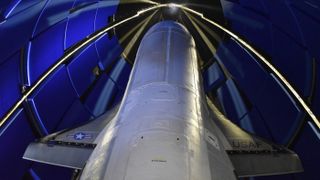
The U.S. Department of Defense's uncrewed X-37B spy plane is one of the most intriguing spaceships in the world, flying regular covert missions whose purposes aren't fully known. But over the years, information about the craft, which is also known as the Orbital Test Vehicle (OTV), has come to light in dribs and drabs. Here, we take a look at 10 things that can be definitively said about the secretive space plane.
Basic facts are available
The reusable X-37B, which resembles a smaller version of one of NASA’s now-retired space shuttles, was originally built by NASA in 1999, as previously reported by Live Science's sister site Space.com. It is around 29 feet (8.8 meters) long and 9.5 feet (2.9 m) tall, with a wingspan of slightly less than 15 feet (4.6 m). It weighs 11,000 pounds (4,990 kilograms) when on the launchpad.
Like the space shuttle, the X-37B takes off vertically and is propelled by a rocket. Once in orbit, it can maneuver on its own, and it eventually lands on a runway back on Earth, much like a conventional plane. The vehicle has a small payload area, roughly the size of a pickup truck bed, enabling it to carry gear and satellites. It operates at an altitude of between 150 and 500 miles (240 to 805 kilometers) above Earth, according to its manufacturer, Boeing.
Different military branches have had it over the years
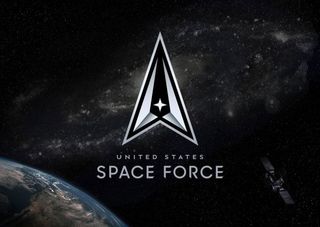
NASA transferred two X-37B vehicles to the Pentagon's Defense Advanced Research Projects Agency (DARPA) in 2004, according to Space.com. After being operated by the U.S. Air Force for many years, the robotic spy planes came under the purview of the newly established Space Force in 2020, according to Military.com, a news and resource website for military members.
Nobody knows quite what it's up to
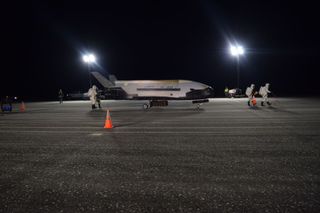
Despite flying six missions to date, the X-37B's true purpose remains a mystery. Some possibilities include surveillance of the Earth’s surface from on high and deploying spy satellites, though nothing has ever been confirmed.
More out-there theories have been proposed, such as the notion that the X-37B could be a space-based bomber, a vehicle for spying on the Chinese space station, or a means for the U.S. military to interfere with other countries' satellites. Experts have splashed cold water on all these ideas, saying they would require large amounts of fuel or would be too easy to trace back to the American military, as previously reported by Live Science.
It can remain in space for years
One of the two X-37Bs accomplished its first launch in 2010 and spent 224 days in space. Its partner vehicle first flew a year later and remained in orbit for more than double that amount of time.
Sign up for the Live Science daily newsletter now
Get the world’s most fascinating discoveries delivered straight to your inbox.
The current record for the spacecraft is 780 days — more than two full years — in orbit, which occurred during the fifth flight of the X-37B, Live Science previously reported. What it was doing up there for all that time remains a mystery.
It can launch on a SpaceX rocket
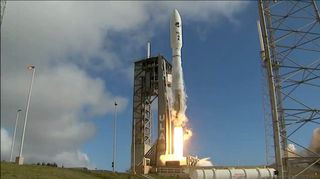
While the X-37B has typically ridden United Launch Alliance’s Atlas V booster into space, the vehicle is capable of being launched by different rockets. During its fifth mission in 2017, the military changed things up a bit and used a SpaceX Falcon 9 rocket to take it to orbit, according to Space.com.
Civilians have photographed an X-37B
Though it is a clandestine piece of military hardware, the X-37B is not immune to being spotted by civilian skywatchers. The vehicle's launch times are publicly announced, which enabled satellite tracker Russell Eberst of Edinburgh, Scotland, to determine where it would be in the sky and see it through a telescope in October 2017. Netherlands-based sky sleuth Cees Bassa did the same that year, Live Science previously reported.
And a Dutch skywatcher and satellite tracker named Ralf Vandebergh was able to photograph the robotic vehicle as it orbited overhead in 2019. "We can recognize a bit of the nose, payload bay and tail of this mini-shuttle, with even a sign of some smaller detail," he told Live Science at the time.
It can carry experiments

Shortly before the most recent X-37B launch in 2020, the U.S. military revealed that the spy plane had a new service module attached to its rear that allowed for large numbers of experiments to be carried to orbit. "The incorporation of a service module on this mission enables us to continue to expand the capabilities of the spacecraft and host more experiments than any of the previous missions," Randy Walden, director and program executive officer for the Department of the Air Force Rapid Capabilities Office, said in a statement.
The mission deployed a small satellite known as FalconSat-8, which contained five experimental payloads, some developed by the U.S. Air Force and some developed by NASA. While NASA has stated that it was flying an experiment on a previous X-37B flight, this was the first time the military had disclosed any specifics about such cargo.
It has won awards
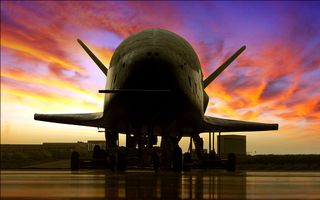
In 2020, the X-37B was given the Collier Trophy, one of the most prominent awards in aviation, for pushing "the boundaries of flight and space exploration," according to the U.S. Air Force. "Sophisticated and uncrewed, the X-37B advances reusable spaceplane technologies and operates experiments in space that are returned for further examination on earth," Secretary of the Air Force Barbara Barrett said in a statement.
Previous Collier Trophy winners include Orville Wright, Howard Hughes, the Apollo 11 lunar landing team, the International Space Station, and the B-52.
It is designed to frustrate enemies

During a panel at the Aspen Security Forum in 2019, former Air Force Secretary Heather Wilson revealed that the X-37B may be able to fly low enough to use Earth's atmosphere to alter its orbit, according to Military.com. Wilson said that the vehicle's maneuvers are specifically designed to drive adversaries such as Russia and China "nuts" because they are unable to predict exactly how it will behave.
A crewed version was once in the works
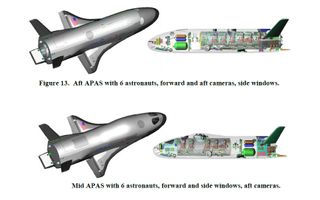
Back in 2011, Boeing studied different vehicle designs that the X-37B could eventually evolve into. A paper by company engineer Arthur Granz titled "X-37B Orbital Test Vehicle and Derivatives" mentioned a version called the X-37C that would be larger and able to carry astronauts, according to Space.com. But since then, little information about the X-37C has appeared.
Originally published on Live Science.

Adam Mann is a freelance journalist with over a decade of experience, specializing in astronomy and physics stories. He has a bachelor's degree in astrophysics from UC Berkeley. His work has appeared in the New Yorker, New York Times, National Geographic, Wall Street Journal, Wired, Nature, Science, and many other places. He lives in Oakland, California, where he enjoys riding his bike.
Most Popular


